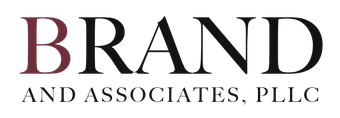Bankruptcy Lawyers: Student Loan Debt Solutions
Navigate Bankruptcy and Student Loan Debt with Experienced Legal Guidance
Home of AZ Bankruptcy Law Centers
Welcome to Brand And Associates, P.L.L.C.
"Brand And Associates, P.L.L.C. is a reputable law firm specializing in bankruptcy and student loan forgiveness. Our dedicated team of attorneys is committed to helping individuals navigate the complexities of bankruptcy and find relief from overwhelming debt. We understand the challenges of student loan repayment and offer expert guidance on loan forgiveness programs and repayment options. With our in-depth knowledge and personalized approach, we strive to provide comprehensive legal solutions tailored to our clients' specific financial situations. Whether you need assistance with bankruptcy filings, loan forgiveness applications, or debt restructuring, we are here to support you every step of the way. Contact Brand And Associates, P.L.L.C. today for a confidential consultation and take control of your financial future
Brand And Associates, P.L.L.C. In Phoenix, Prescott and Scottsdale, Arizona
Welcome to Brand And Associates, P.L.L.C., where we provide sympathetic help and practical answers for those facing financial difficulties. Our dedicated team specializes in various services, including Student Loan Debt Relief, Chapter 7, Chapter 11, and Chapter 13 Bankruptcy. With a compassionate approach, we understand the emotional toll of financial burdens and work closely with our clients to craft personalized plans that pave the way toward financial stability, freedom, and a brighter future.
Why Choose Us?
Extensive Experience
With over 50 years of collective experience, our bankruptcy and student loan forgiveness law group brings a wealth of knowledge and expertise to help clients navigate complex financial challenges.
Comprehensive Services
We offer a wide range of services, including bankruptcy filings, student loan forgiveness applications, debt restructuring, and legal guidance, providing clients with holistic solutions tailored to their unique needs.
Specialized Expertise
Our team specializes in bankruptcy and student loan forgiveness, allowing us to stay up-to-date with the latest laws, regulations, and strategies, ensuring the best possible outcomes for our clients.
Client-Centered Approach
We prioritize building strong relationships with our clients, providing compassionate and personalized attention throughout their legal journey, and guiding them towards financial relief and a fresh start.
Our Services
At Brand And Associates, P.L.L.C., we understand the overwhelming impact of Student Loan Debt on individuals. Our empathetic team is dedicated to providing personalized solutions that alleviate the burden and empower clients to regain control of their financial future, ensuring they can pursue their dreams without the weight of excessive debt.
Experts at Brand And Associates, P.L.L.C. specializes in Chapter 7 Bankruptcy, providing empathetic and reliable assistance to individuals seeking debt relief. Our experienced team guides clients through the process, ensuring their rights and interests are protected and offering a compassionate approach that helps them regain financial stability and a renewed sense of hope.
We offer empathetic support to businesses navigating the complexities of Chapter 11 Bankruptcy. With a focus on understanding their unique circumstances, our experienced team provides strategic guidance and personalized solutions, helping clients restructure their debts and embark on a path toward financial recovery and renewed business viability.
At Brand And Associates, P.L.L.C., we provide compassionate support to individuals seeking relief from overwhelming debts through Chapter 13 Bankruptcy. Our empathetic team understands individuals' challenges and works closely with them to develop customized plans that restructure their debts, allowing them to regain control of their financial future and embark on a fresh start.
Why Hire Us?
We are here to support you every step of the way, whether you require aid with bankruptcy files, loan forgiveness requests, or debt restructuring. Take charge of your financial destiny by contacting Brand And Associates, P.L.L.C.
today for a confidential consultation.
Click below to leave us a review!

Slide title
Write your caption hereButton
Send Us A Message
Thank you for contacting us.
We will get back to you as soon as possible
Oops, there was an error sending your message.
Please try again later
Location
Areas We Serve
- Phoenix, AZ
- Prescott, AZ
- Scottsdale, AZ
- Tempe, AZ
- Mesa, AZ
- Chandler, AZ
- Gilbert, AZ
- Glendale, AZ
- Peoria, AZ
- Surprise, AZ
- Avondale, AZ
- Goodyear, AZ
- Buckeye, AZ
- Sun City, AZ
- Apache Junction, AZ
- Fountain Hills, AZ
- Cave Creek, AZ
- El Mirage, AZ
- Litchfield Park, AZ
- Tolleson, AZ
Location
140 N Montezuma St
Prescott, AZ 86301
4720 East Cholla Street Phoenix Arizona 85028
Business Hours
- Mon - Fri
- -
- Sat - Sun
- -

